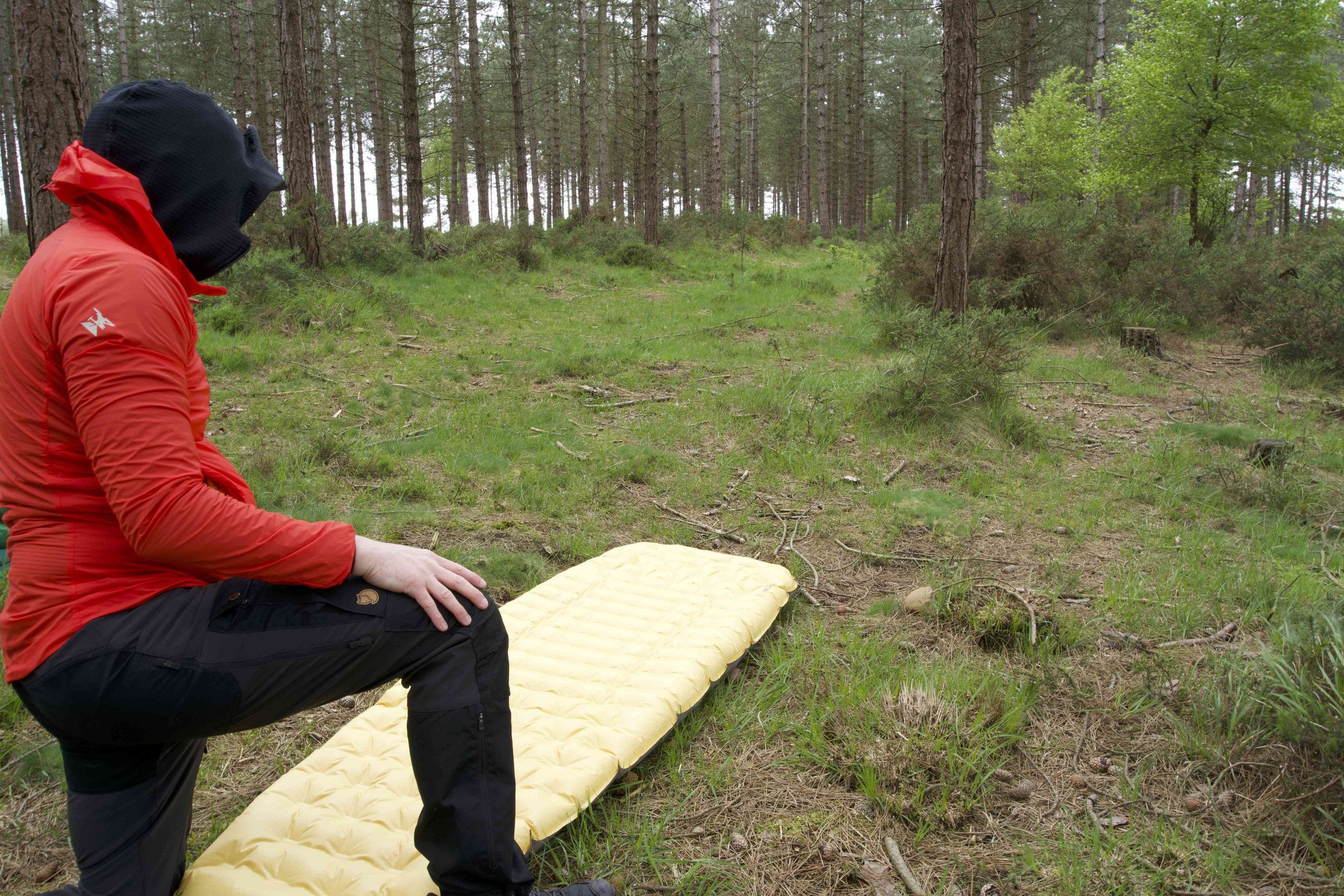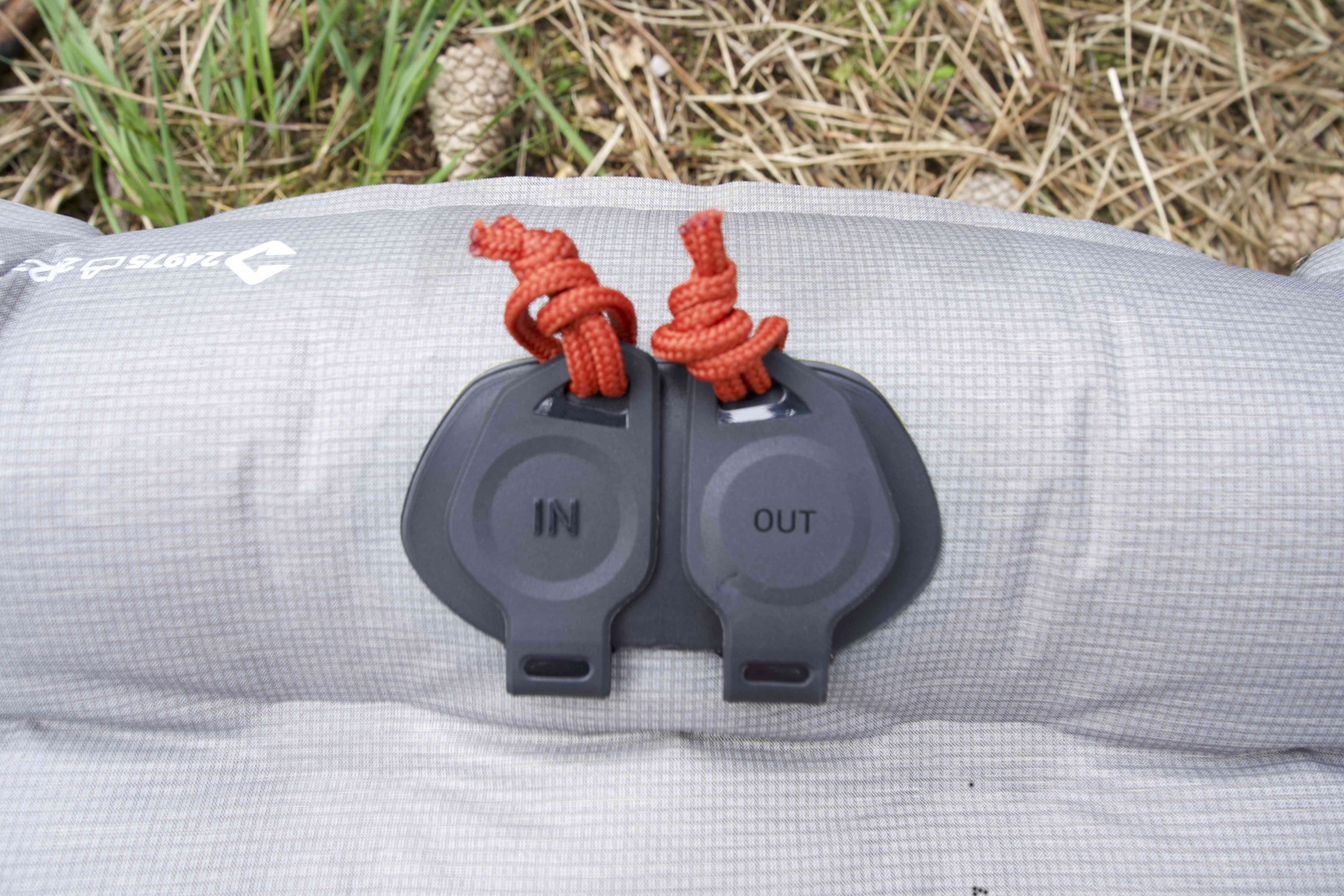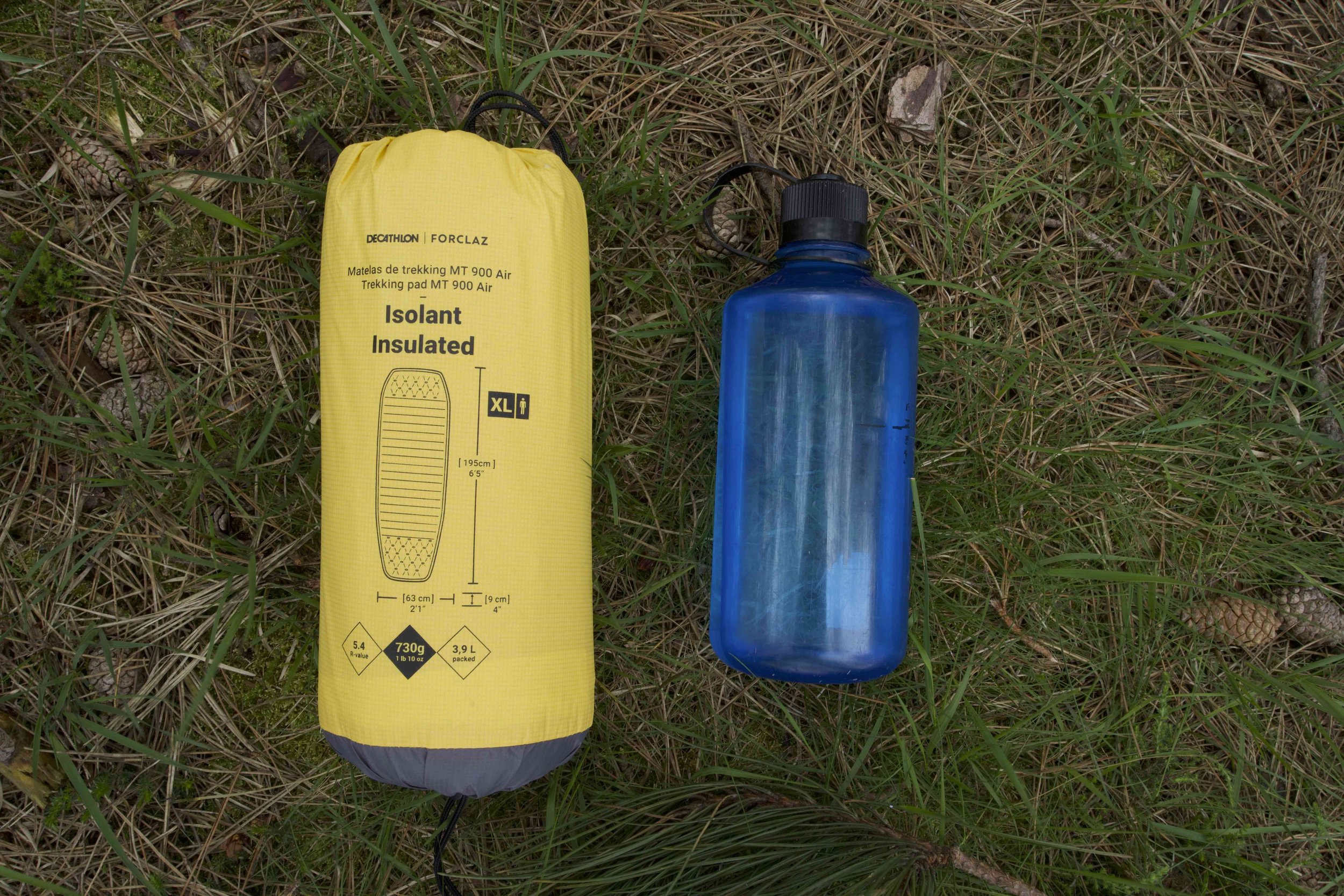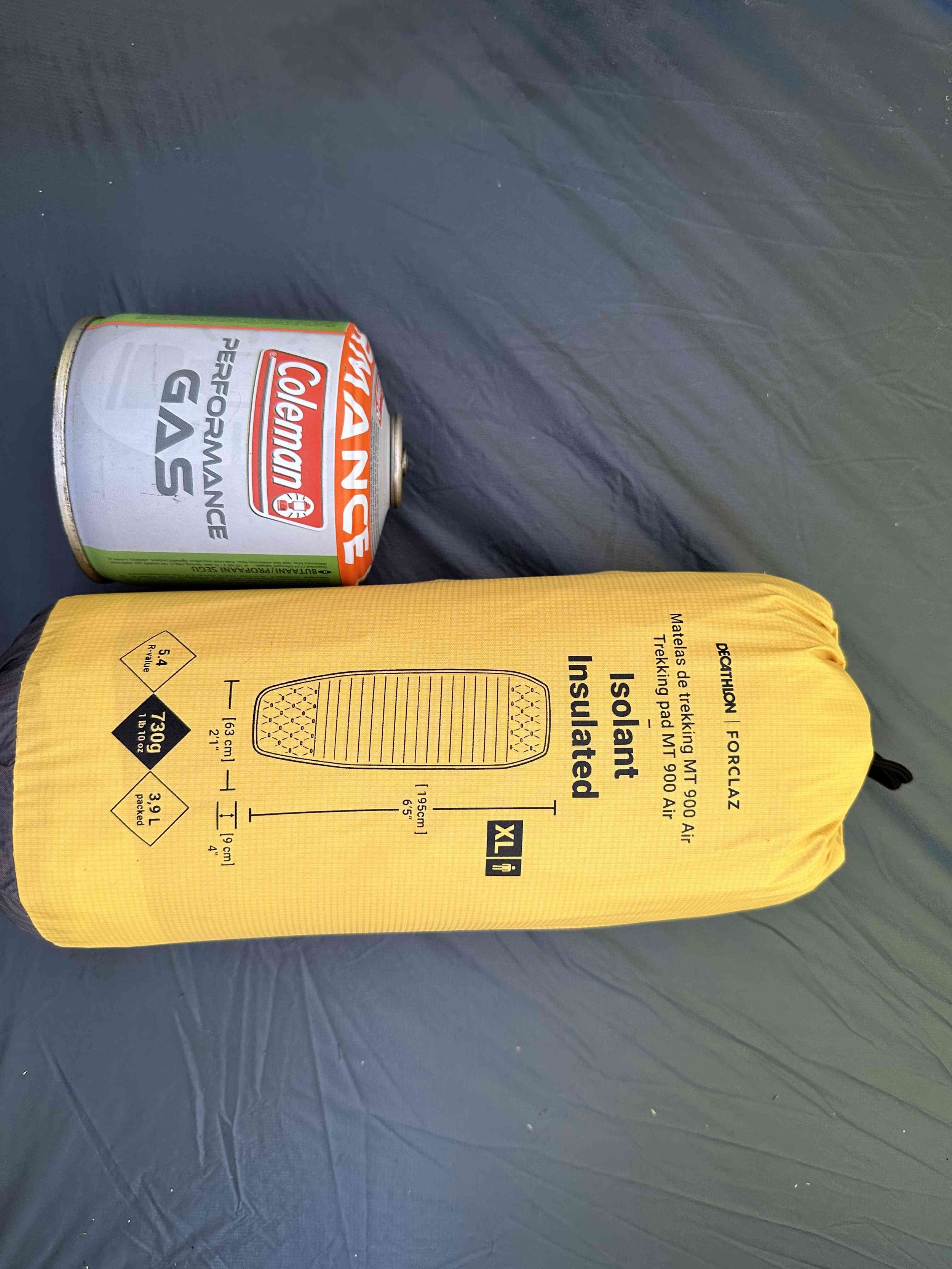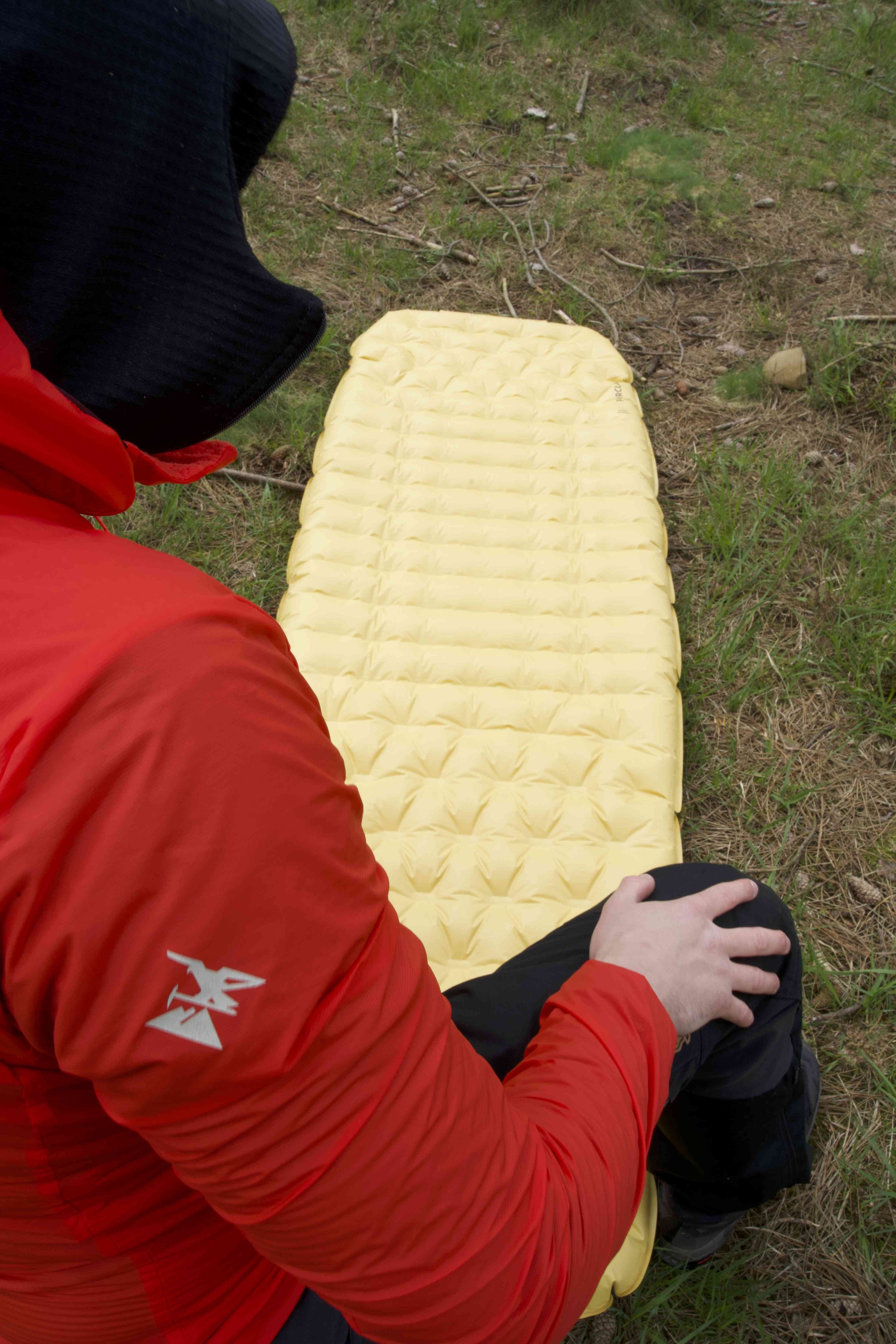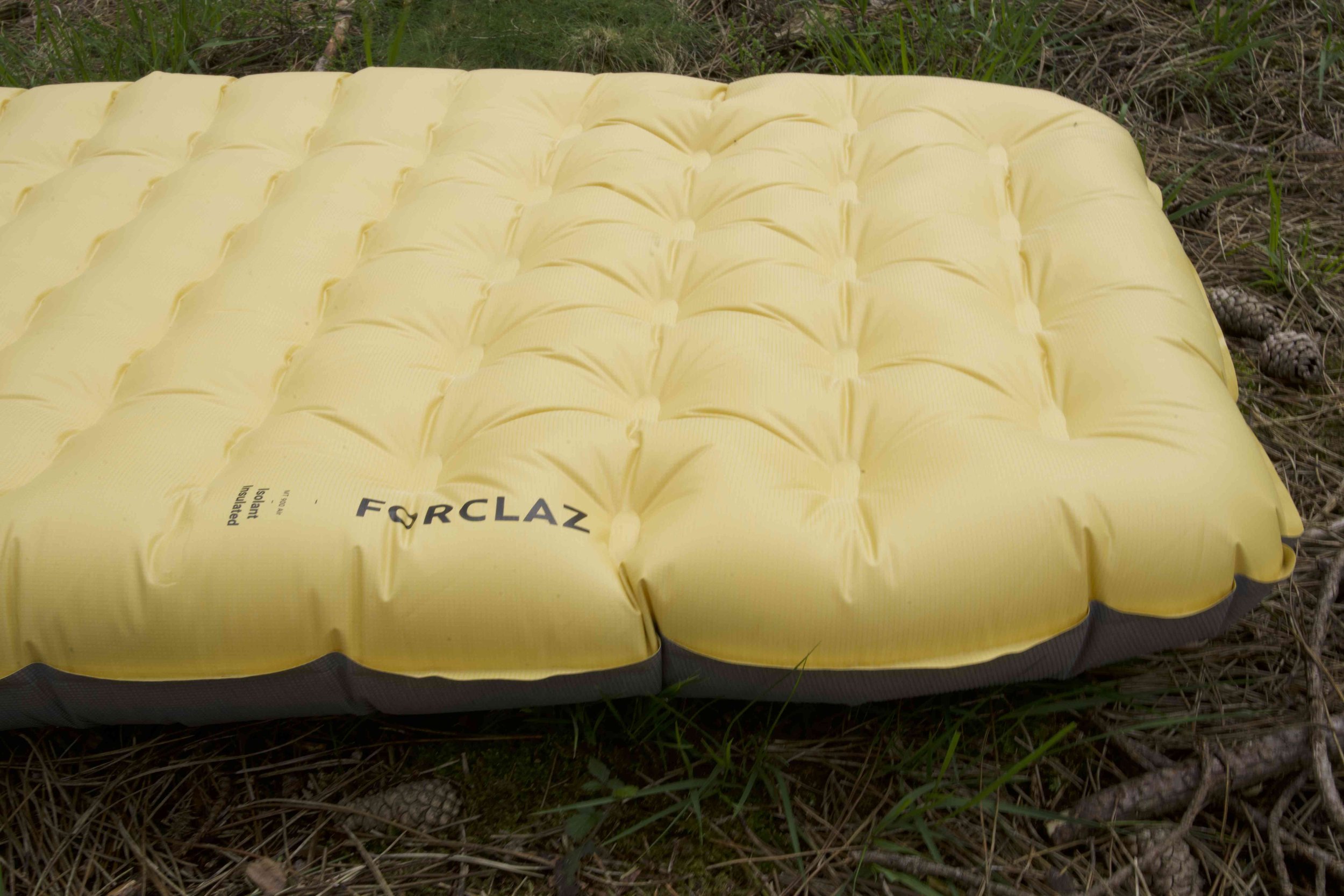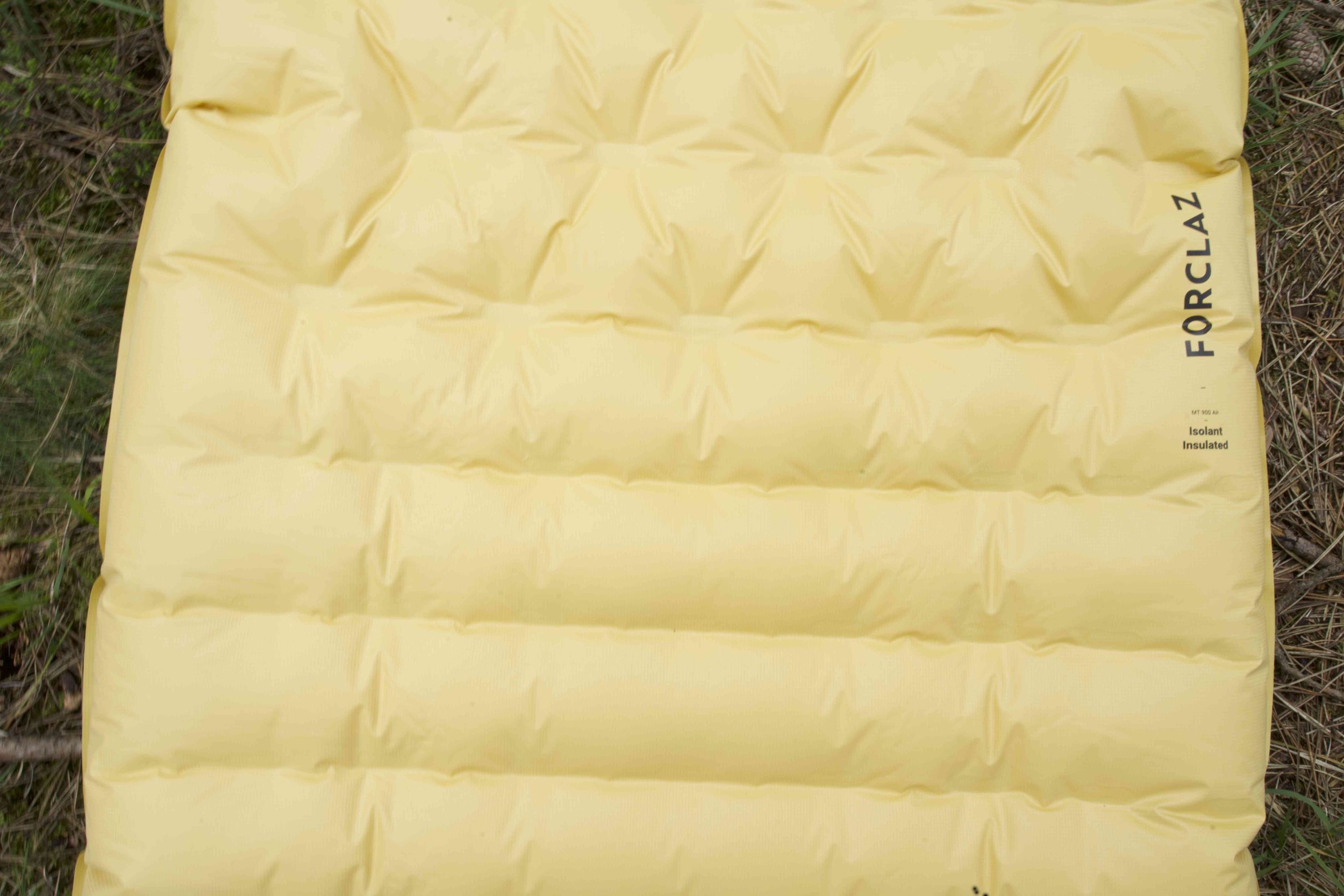Simond MT900 sleeping pad review: A great all-rounder at an excellent price
A four-season inflatable pad that offers exceptional warmth and comfort at a wallet-friendly price — the Simond MT900 is a game-changer for UK wildcampers who want premium performance without breaking the bank.
Simond MT900 sleeping pad
Ideal for: Fair weather 4-season backpacking & wildcamping
Not suitable for: Fastpacking, deep winter trekking and camping
Built for UK wildcampers, alpine bivvy-goers and weekend wanderers alike, the Simond MT900 sleeping pad delivers serious warmth, low weight and solid packability — all for a fraction of the price of the big-name pads it competes with. With an R-value of 5.4, 6cm thickness and a smart dual-valve system, it’s got all the makings of a go-to four-season pad. The fact that it costs just £124.99 makes it even more impressive.
The Good
Excellent value for money
Very warm for its weight
Comfortable
Small pack size
Quiet
The Bad
Heavier than some of the more premium (and more expensive) pads
Mummy shape not as supportive as square pads
Simond MT900 sleeping pad review
Simond might not be the first name that springs to mind when you’re browsing the sleeping pad aisle, but this French mountaineering brand — part of the Decathlon family — is quietly building a reputation for delivering solid mountain kit at very reasonable prices. Long known for its climbing hardware and alpine-ready softshells, Simond has begun pushing deeper into the camping and backpacking scene in recent years. If you’ve shopped at Decathlon, you may have spotted this exact pad previously sold under their Forclaz range — the product is the same, but the branding has since shifted to reflect its mountaineering DNA.
The Simond MT900 is designed for wild camping and bivvying in genuinely cold conditions. With a high R-value of 5.4, a weight of just 620 grams, and a pack size roughly equal to a 1-litre Nalgene bottle, it’s clearly aimed at those who want solid comfort and insulation without adding bulk or weight to their setup. Priced at just £124.99, it confidently steps into a market dominated by much more expensive alternatives — and makes a seriously strong case for itself.
Take the Therm-a-Rest NeoAir XLite NXT, for instance — long considered the gold standard in lightweight inflatable pads. At 350 grams, it’s almost half the weight of the Simond MT900 and packs down a touch smaller too. But it also comes in at close to £200 and delivers a lower R-value of 4.5. Unless you’re deep into ultralight obsessiveness or tackling high alpine routes where every gram counts, the MT900’s weight is still more than reasonable — and you’re getting significantly more warmth for your trouble.
Then there’s the Sea to Summit Ether Light XT Extreme — another standout in the four-season inflatable pad space. With its plush 10cm thickness, warm 6.2 R-value and air sprung cell design, it’s a luxurious choice for cold nights. But it also weighs more, takes up more room in your pack, and costs north of £200. For some, that extra warmth and comfort will be worth it. But for many UK wildcampers, the MT900’s 6cm depth and 5.4 R-value strike a far better balance between performance and affordability.
Even compared to up-and-coming names like Light Tour — whose R5.8 model comes in at a very similar weight and warmth level — the Simond MT900 has the edge in accessibility. While Light Tour gear is mostly limited to online retailers, Simond products are available in Decathlon stores up and down the UK, meaning you can actually try before you buy. At £124.99, it’s priced competitively against both Light Tour and Therm-a-Rest options — and still undercuts Sea to Summit by a wide margin.
All in all, Simond have done something special with the MT900: they’ve created a genuinely warm, durable, and comfortable four-season inflatable pad that stands up to industry favourites, all while costing considerably less. Whether you’re just starting your wildcamping journey or upgrading your winter setup, this is one of the few pads that can go the distance without draining your bank account.
Our experience with the Simond MT900 sleeping pad
We’ve spent over a dozen nights on the Simond MT900 in all seasons and in all conditions. From a summer ramble across Dartmoor to sub-zero camps above Llyn y Fan Fach, this pad has been there with us — unrolled on moss, laid down on frozen scree, and puffed up inside draughty tents. On our Dartmoor trip, we appreciated how small it packed down in the rucksack and how cushy it felt night after night. And on that bitterly cold Brecon ridge, where the ground had been frozen for days, it gave a good account of itself — though we did feel a bit of cold creep in around the hips when sleeping on our side. In properly grim conditions, we’d recommend doubling it up with a foam mat. But in every other scenario, it was warm, comfy and reliable.
Key features and performance
Warmth & comfort
Let’s get straight to the headline stat: this pad has an R-value of 5.4. For the uninitiated, that’s a measurement of how well a sleeping pad resists heat loss to the ground — and 5.4 puts this squarely in the four-season territory. For most UK-based adventurers, that’s more than enough. Yes, there are warmer pads out there — the Ether Lite XT Extreme edges it at 6.2 — but for all but the coldest winter camps, the MT900 has you covered.
One reason it holds its heat so well is its 6 cm thickness, which not only insulates but adds a big dose of comfort too. Even when fully inflated, you stay nicely elevated above the ground — no more waking up with your hips in a cold dip because the air’s shifted or deflated overnight. It keeps pressure points off the ground throughout the night, something we’ve found rare in sub-£150 pads.
Comfort-wise, the MT900 punches well above its price tag. We found it genuinely impressive — right up there with the Therm-a-Rest Neoair range, despite costing nearly half as much. Of course, comfort is subjective, so if you’re unsure, one of the perks here is being able to nip into your local Decathlon and try it out in-store. That simple bit of accessibility gives it a real edge over many online-only competitors. As for size, both the L and XL versions hit the mark. The regular L model offers enough space to roll around comfortably, while the XL version finally gave our 6’4” tester a pad he didn’t spill off. For just £10 more, it’s a great option for taller campers or those who like a bit more room to stretch out.
Inflating and deflating
Usability is another strong point. The dual-valve system makes both inflation and deflation refreshingly simple — especially compared to some of the more fiddly ultralight pads we’ve used in the past. Using the included stuff sack, which cleverly doubles as an inflation bag, we had it fully inflated in under a minute without getting light-headed from mouth-blowing. It’s a straightforward process: clip the sack onto the valve, scoop in some air, and roll. A few good compressions and you’re done.
But it’s the pack-down process that really won us over. With other pads, the morning routine can feel like a wrestling match — trying to squeeze the last bits of air out while the clock ticks toward your hiking start time. Not so here. Open the valve to its wide setting and the air rushes out in seconds. We found that two slow, firm rolls from foot to valve were usually enough to push out the bulk of the air. After that, it was just a case of folding it lengthways and giving it one last tight roll to get it back into the stuff sack. No desperate kneeling, no awkward elbow leans, and definitely no shouting.
Even on cold mornings with numb fingers, the MT900 was easy to deflate and pack. On our Dartmoor traverse, where we were setting up and packing down camp in different spots each day, this simplicity became one of our favourite features. When your hands are cold, your brain’s a bit foggy, and you just want a brew and to get moving, a pad that packs down without fuss is a genuine luxury. And the stuff sack? It’s well-sized. You don’t have to roll it perfectly to get it back in, which is always appreciated when you’re on a windswept hillside trying to beat the weather.
Durability
Then there’s the build. Made from a 50% polyamide and 50% polyurethane blend, this pad is reassuringly tough. We didn’t use a groundsheet once during testing — and despite lying it directly on rocky ground, mossy turf and frozen hillsides, it came through unscathed. While it’s always worth being cautious where you pitch, this feels far more durable than many ultralight alternatives we’ve tested — including the Big Agnes Zoom UL.
You also get a repair kit included in the stuff sack — a small but thoughtful touch that adds to the overall feeling that this pad offers far more than its price suggests. And last but not least, let’s talk noise. Unlike many lightweight inflatables that sound like a crisp packet under your sleeping bag, the MT900 is refreshingly quiet. No rustling, no crinkling — just a peaceful night’s sleep after a long day on the trail.
The Simond MT900 sleeping pad’s performance in the UK in a nutshell
From the milder nights of late summer to full-on frosty conditions, the MT900 held its own. We first put it to use on a multi-day traverse across Dartmoor — three days of gear testing, river crossings, rolling fog, and all the moorland unpredictability you’d expect. The pad proved a reliable companion from the get-go, slipping easily into our packs each morning and puffing up without drama each night. With varied terrain under our tents — everything from springy turf to uneven granite — the comfort and insulation levels stayed impressively consistent. We noticed no cold spots, no awkward sagging, and definitely no need for midnight re-inflation.
Then came the proper cold. We pitched high above Llyn y Fan Fach in the Brecon Beacons, where the temperature hadn’t climbed above zero in over a week. The ground beneath us was rock solid, frozen deep through — and we were curious to see how far the MT900’s 5.4 R-value would stretch. For the most part, it passed the test. Warmth remained steady across the torso and legs, but we did notice a slight cold patch creeping in at the hips when side sleeping — a known weak point for many pads in sub-zero conditions. It wasn’t dramatic, and it didn’t keep us up, but it’s worth noting. For trips like that in the depths of winter, we’d pair it with a closed-cell foam mat for good measure.
That said, in all other scenarios — spring, summer, and even the shoulder months where frost lingers in hollows — this pad was absolutely spot-on. It insulated well, felt robust under pressure, and always gave us a solid night’s sleep. Factor in its fuss-free setup and durable materials, and what you’ve got here is a proper four-season workhorse. One that slots into any UK wildcamping kit list without fuss, without compromise — and without the eye-watering price tag.
Simond MT900 sleeping pad FAQs
-
The Simond MT900 has an R-value of 5.4, making it suitable for four-season use in the UK. We found it reliably warm in everything from summer through to deep winter — though pairing it with a foam mat is advisable when camping on frozen ground for added insulation.
-
The R-value of the Simond MT900 sleeping pad is 5.4. That puts it in the four-season category, offering enough insulation to keep most UK campers warm across a wide range of conditions, even in late autumn and winter.
-
When packed away, the fits into a stuff sack that’s roughly the size of a 1-litre Nalgene bottle. It’s not the tiniest pad on the market MT900, but for a four-season option with this level of warmth and comfort, the packability is more than acceptable.
-
Made from a 50% polyamide and 50% polyurethane blend, the MT900 is surprisingly tough. We never used a groundsheet during testing and it came through unscathed. It’s more robust than many ultralight alternatives and built to last.
-
Very. The MT900 uses a smart dual-valve system and comes with a pump sack that doubles as the stuff sack. It inflates quickly, and deflation is simple thanks to the wide valve opening.
-
Absolutely. At £124.99, it’s one of the best-value four-season sleeping pads we’ve tested. It performs on par with models costing nearly twice as much and comes with all the premium touches — comfort, warmth, durability and quiet sleep — without the price tag.
Conclusion
For UK-based wildcampers, hillwalkers and alpine ramblers looking for serious warmth and comfort on a budget, the Simond MT900 might just be one of the best pads out there right now. It’s not the lightest, smallest or warmest — but it gets close enough on all those fronts to deliver remarkable all-round performance. The fact that it costs just £124.99 and is available to try before you buy in-store makes it one of the most accessible four-season pads on the market.
We’d happily recommend it to anyone getting into wildcamping or upgrading from a cheaper pad. And even seasoned pros might find themselves wondering why they’re still dropping over £200 on something that doesn’t actually do the job much better.

